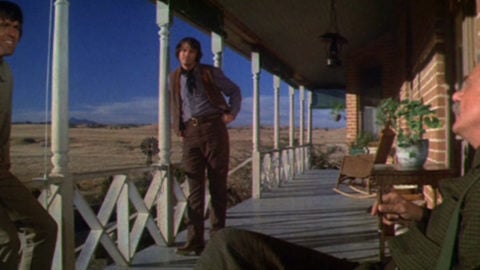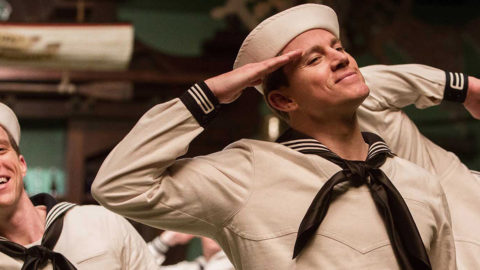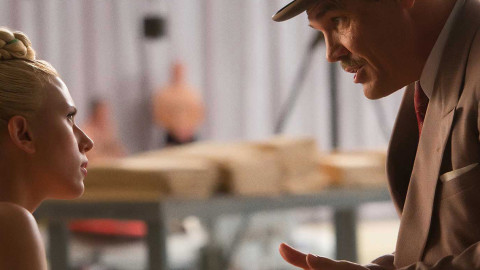By Michael Koresky in the September-October 2018 Issue
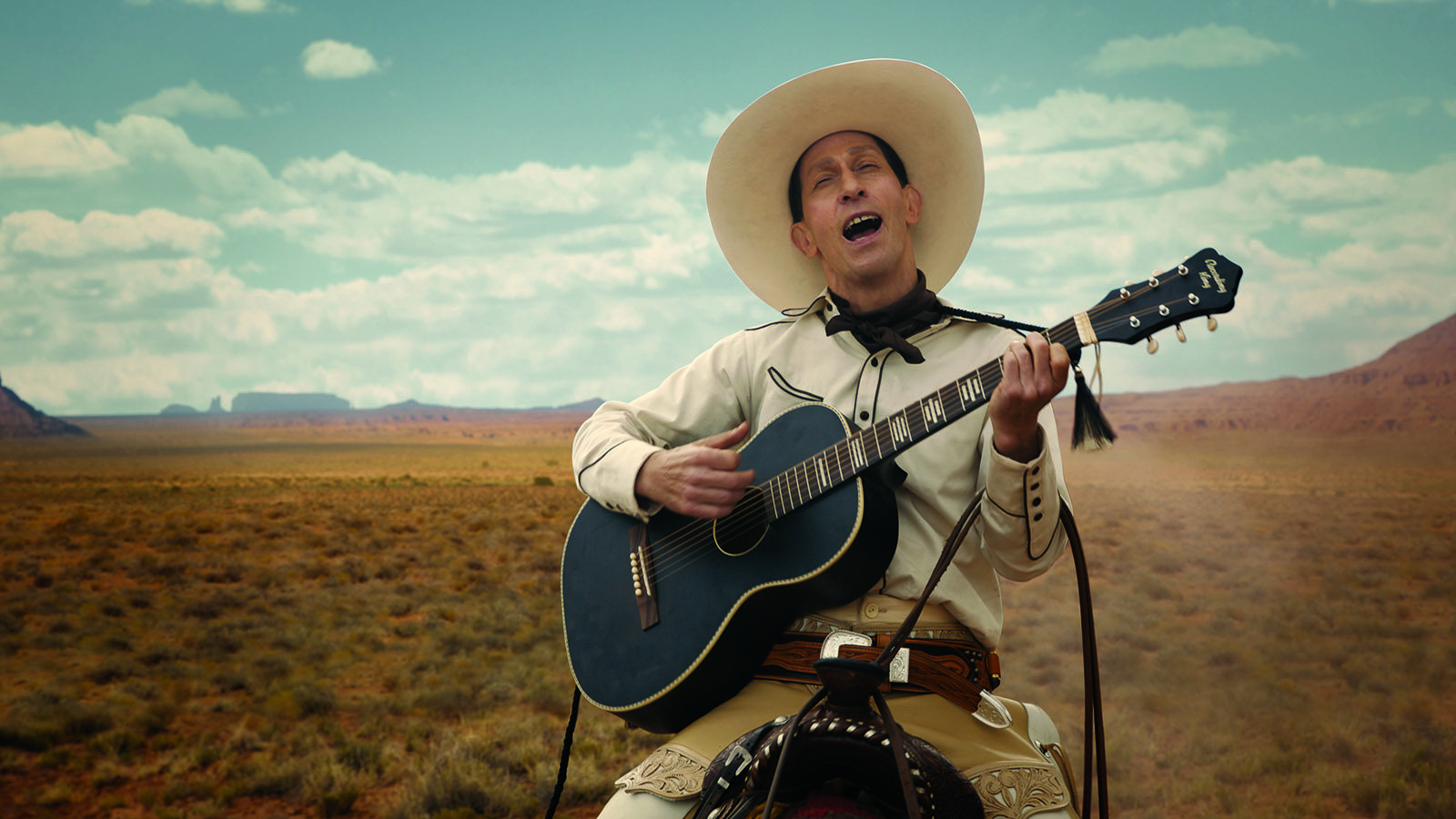
The Paragon of Animals
With their multi-part yarn The Ballad of Buster Scruggs, the Coen Brothers mosey on back to the Old West to survey the eternal disappointment that is man
Leave it to the Coen Brothers to make an anthology film brimming with colorful characters, unexpected turnabouts, engrossing scrapes and dilemmas, picturesque vistas, and symmetric structural and visual pleasures in which the territory of mankind amounts to little more than a foul and pestilent congregation of vapors. The Ballad of Buster Scruggs is a film made up almost exclusively of anti-heroes—not to be confused with antiheroes, commonly used to describe protagonists like Travis Bickle or William Munny, whose often vile actions do little to expunge their fascination or their ability to ably carry a narrative. Joel and Ethan Coen’s gallery of reprobates here are quite the opposite of what we would traditionally refer to as a hero: feckless, loveless, aimless, murderous, weak-willed, greedy, or pathetic, and it’s unlikely that any of them could have sustained a feature-length narrative without delivering viewers directly to the exits. But what makes the Coens’ gambit work so brilliantly is that these discrete tales of the banal and the cursed accumulate into a single, unified work that is much stronger, stranger, and sadder than initially seems possible. These six stories are set in a broad, baldly fictional Old West, and taken together they reflect a kind of inverse American progress, an ever-growing moral deficiency that rides sidesaddle with the historical realities of western expansion, and which, however its defiantly off-trend filmmakers might deny it, speaks succinctly to the spiritual waywardness of our current moment.
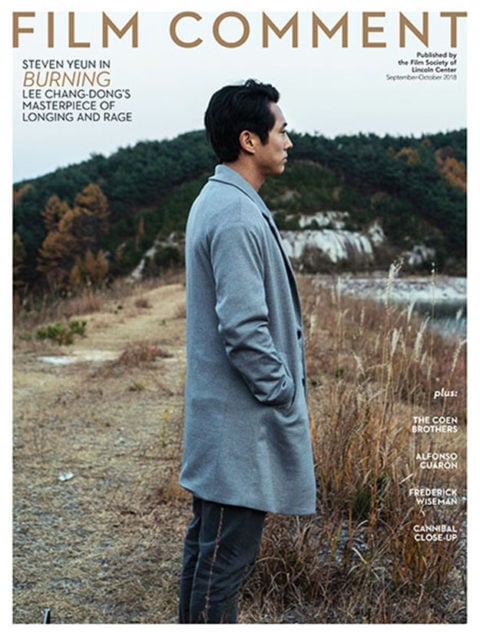
From the September-October 2018 Issue
Also in this issue
The Minnesota-born brothers, whose peripatetic brand of filmmaking has brought them to various regions of the U.S.—real and imaginary—for the past 30-plus years, have long evinced a preoccupation with the West, looking at it with an outsider’s adoration and skepticism. Themes of the American white man’s bumbling attempts at realizing his own “manifest destiny” can be detected through all the Coen films we might dub Westerns: Raising Arizona (1987), No Country for Old Men (2007), True Grit (2010). Of these, the latter—from the Charles Portis book also adapted into the 1969 film that earned John Wayne his Oscar—is their most rigorous engagement with the devices and story beats of the Western; it’s also the most visually restrained, emotionally earnest film of their career, thus making it as temperamentally different from The Ballad of Buster Scruggs as anything they’ve ever made.
The Coens are working here in a very specific vernacular. This is not the type of revisionist Western we’ve come to expect from decades of American cinema, with its righteous racial liberalism (Little Big Man, Dances with Wolves), solemnly introspective bloodletting (The Wild Bunch, Unforgiven), or scrupulous myth-busting (McCabe & Mrs. Miller, The Assassination of Jesse James by the Coward Robert Ford), implicitly righting the wrongs of not just a popular art form but history itself. Ever wary of do-gooder cinema, the Coens have excavated the concept of the dime-store pulp Western, those paperbacks that hearken back more than 150 years. (The famous Beadle & Co.’s first dime novel, published in 1860, was titled Malaeska: The Indian Wife of the White Hunter, written by the now unsung Ann Sophia Winterbotham Stephens.) Often originating in New York printing houses, these books frequently catered to hungry-eyed Eastern readers with a desire for frontier vistas and exotic lawlessness. Disreputable descendants of James Fenimore Cooper and Sir Walter Scott, they trafficked in violent action and sudden death, and they often allowed their devotees to indulge in the broadest notions of the West; i.e., the noble white adventurers blazing a trail to the far reaches of the country, protecting themselves and their families against the blood-curdling war whoops of the native “savages.” The tradition gained in popularity through the early part of the 20th century and remained a major market at least through the 1950s, with 20th-century Western stories by Louis L’Amour or Max Brand or Zane Grey both informing and being informed by concurrent developments in Western moviemaking. There is diamond-cut beauty in some of this writing, however unfashionable: a tightness of prose and clarity of observation that could be said to find a corollary in the elegant, generic filmic language the Coen Brothers have wielded in such films as No Country for Old Men and True Grit. Also, with their unbounded sensationalism cloaking an upstanding moralism, dime-store novels are a good reference point for the Coens, whose rich, occasionally florid and grotesque style conceals hard moral centers—if never certitude.
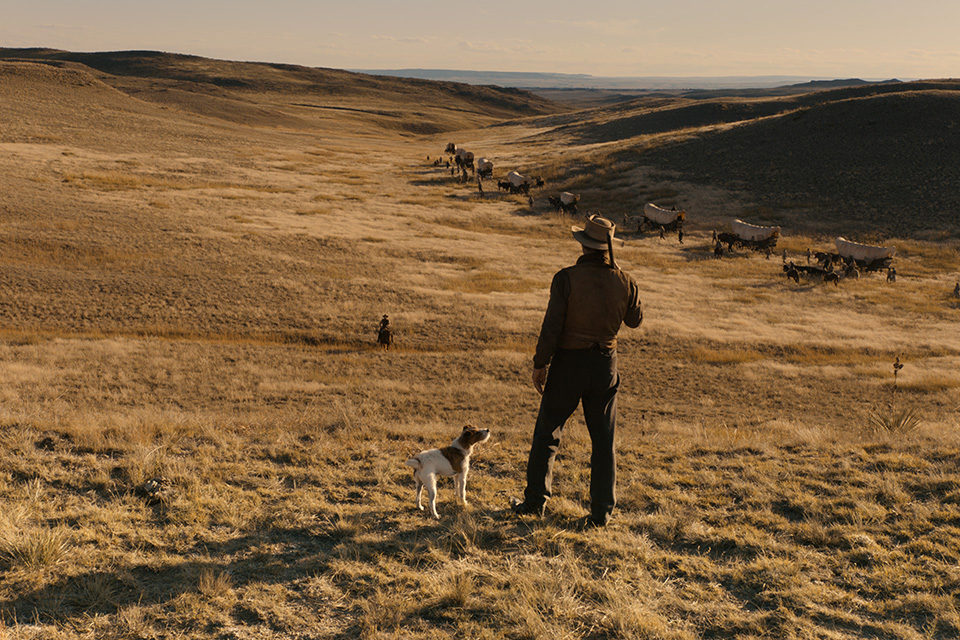
The genre fits them like a glove; for Buster Scruggs they even use the hoary visual device of a vintage book’s turning pages to carry us from one chapter to the next, complete with color plates. The look and tone here thus instantly signal a late-19th/early-20th century Americana, a form that feels purposely cheapjack, especially when put up against the hushed contemplation of Altman or Eastwood or the raw realism of Kelly Reichardt. The Coens are not just in the territory of the paperback variety of outmoded pulp but also those tales of violent, sometimes cosmic retribution peddled by EC Comics of the 1940s and ’50s. These are swift, unapologetic stories of moral bankruptcy and physical brutality, with climactic punches and unexpected turnabouts; generic tropes (of charismatic outlaws and stagecoach journeys) and themes (of frontier expansion and self-actualization) are pushed to garish extremes, where they become valuable interrogative strategies. Of course, the Coen Brothers have never been slavish imitators of anything, so they’re employing the genre’s form and outline—the myth—to burrow into their own particular brand of lonely American existentialism. In their films—especially Barton Fink (1991), The Man Who Wasn’t There (2001), No Country for Old Men, A Serious Man (2009), and Inside Llewyn Davis (2013)—there’s always the sense that the deck is stacked against us and that we’re the authors of our own misery, a doubly discomfiting, Camusian view that perfectly matches their aesthetic approach, an overwhelming omniscience that results in a kind of bravura melancholy.
Though first announced as an anthology series for home viewing, The Ballad of Buster Scruggs has emerged clearly and definitively as a film, each of its tales building upon the last in provocative and discomfiting ways. If one were to watch just the eponymous first episode, it’s difficult to imagine it functioning on its own as a contained short: almost senselessly aggressive, it would seem to show the Coens regressing to a register of shticky humor even more jarringly broad than Raising Arizona or The Hudsucker Proxy (1994). In the title role, a self-possessed, eternally smiling outlaw in a blindingly white cowboy hat, Tim Blake Nelson musters more gee-gosh cornpone than one would see in a Chill Wills movie marathon; meanwhile the song he croons on the lonely trail (the Sons of the Pioneers’ “Cool Water”) is a little too farcically performed, and the New Mexico Canyon locale through which we first see him ambling on his horse is a little too pictorial and vivid, thanks to Bruno Delbonnel’s disconcertingly spotless photography (employing the Arri Alexa, this is the Coens’ first digitally shot film). When bloodthirsty Buster (nicknamed “The Misanthrope”) descends upon a roughneck cantina and then a dust-bowl town’s saloon, he begins to show the full extent of his murderous skills and the singularly emotionless way with which he dispatches them; here the overly choreographed violence that the Coens ratchet up begins to feel like it’s parodying Tarantino, while Buster’s extreme sociopathy almost immediately takes the pleasure out of the gunslinger archetype. Buster Scruggs is a Billy the Kid without mystique, a Clanton or a McLaury without motivation; with his mile-wide grin and direct-to-camera narration, he’s wildly ingratiating yet he neither seeks nor requires engagement from us as viewers. In other words, he’s an apt mascot for a film that will prove to have no interest in serving up characters of courage or bravery or loyalty (oft-extolled Western virtues), as well as—it must be said—a perfect avatar for a political era defined by go-it-alone narcissism.
This episode is followed by another grimly funny bit of business that effortlessly displays the Coens’ penchant for humorous narrative contraptions fueled by hangdog determinism. Starring a weather-beaten James Franco as a bank robber with no discernible qualities other than a will to survive another day, “Near Algodones” drains its heist of any antiestablishment exuberance and its criminality of any glory, building to a gallows punch line (reminiscent of the disturbing public triple-execution scene early in True Grit) that teases at, yet refuses, spiritual redemption for its stupid white man. However gratifyingly breakneck their pacing and clean their visual lines of action, one would be forgiven for watching these first two chapters and wondering what in heckfire the Coens are really on about. The depths of their vision begin to come into focus in the third part, “Meal Ticket,” starring Liam Neeson as a taciturn traveling impresario and Harry Melling as his entertainment, an armless, legless man with the oratory skills of Olivier. At the back of Neeson’s wagon, he is carted out to perform snatches of well-trod monologues, from Old Testament to Shakespeare to the Gettysburg Address, a kind of theatrical Reader’s Digest, greatest hits for the filthy masses. He initially succeeds at procuring goosebumps from dirt-soiled, slack-jawed audiences in poor towns along their route. But as a follower of any aspect of the entertainment industry knows, there’s always something coming down the pike to distract a fickle public seeking lowest-common-denominator thrills, and the Coens express this with a plot turn that’s at once so absurd and unutterably sad that it casts a purposeful pall over the remainder of the film. “Meal Ticket” is also a reminder that maybe no one in American film is better than Joel and Ethan Coen at rendering off-screen violence with gut-punch simplicity—recall the never-seen slayings of Mrs. Lundegaard, a heap on the floor at the end of Fargo (1996), and Llewelyn and Carla Jean Moss in No Country for Old Men. Here, the death is twofold, a literal killing that also stands in for the gradual erosion of artistic standards and, concurrently, human values—and value.
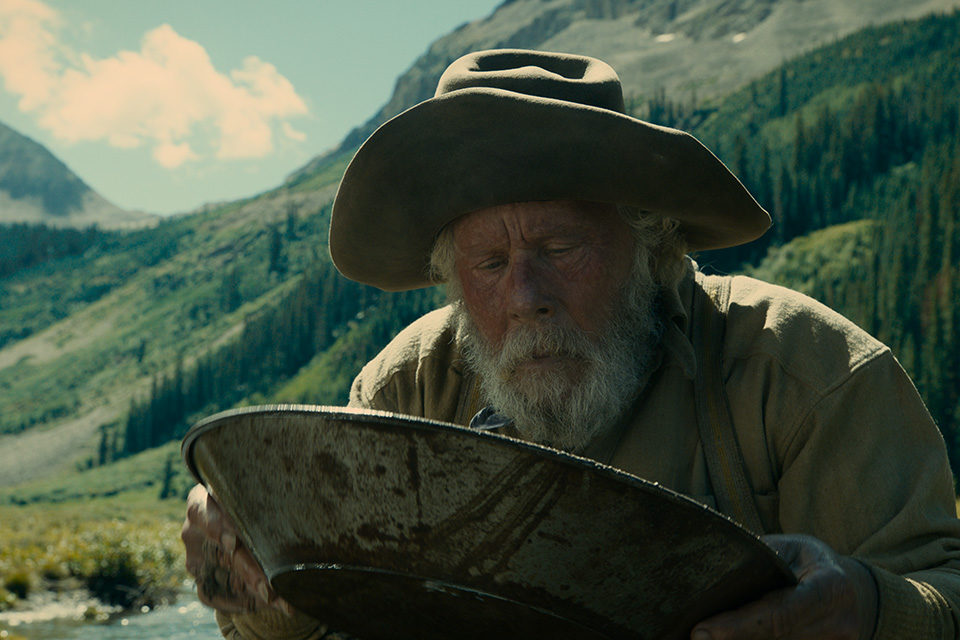
The most piercing line from Inside Llewyn Davis—“I don’t see a lot of money here,” pragmatically stated by F. Murray Abraham’s Chicago music producer following Llewyn’s aching rendition of “The Death of Queen Jane”—comes to mind during part three. Part four, titled “All Gold Canyon,” might evoke Frances McDormand’s climactic, head-shaking chastisement to caught criminal Peter Stormare in Fargo: “ . . . for a little bit of money.” Here, a grizzled, grumbling prospector (Tom Waits) emerges onto a sun-dappled expanse of gorgeous, verdant, untouched land, agog at the wonders of nature, captured by Delbonnel with pioneer spirit—and then proceeds to tear and dig and spoil until he finds enough gold to make his trek worthwhile. Somewhere between the despair of the prior segment and the unadulterated anger of this one—which, considering our current regime’s scorched-planet environmental policies, feels about as “politically relevant” as the Coens are ever likely to get—the entire experience of The Ballad of Buster Scruggs rages into full force, and the film begins to hardly feel like a period piece at all.
The Coens meticulously tease us that Mother Nature may exact her revenge on Waits’s greedy white man, but of course, you can’t always get what you want with the Coens; few filmmakers are as uncannily adept at denying easy satisfaction and narrative closure while also making audiences feel like everything is somehow in its right place (No Country for Old Men’s improbable Best Picture win at the Oscars remains a testament to their unlikely mainstream resonance). The most sustained example of this here is Buster Scruggs’s centerpiece, “The Gal Who Got Rattled.” Moving from the “glory” of the Gold Rush to the “optimism” of the Oregon Trail, chapter five finds a perfectly cast Zoe Kazan as a pious young woman en route to meet a potential husband (who may or may not know she exists), accompanied by her tubercular brother and an extended caravan moving northwest. Another focal point emerges in Billy Knapp (Bill Heck), a handsome, kind-eyed cowhand who vows to protect Kazan’s single “little lady” during the journey once her sibling is out of the picture. Yet whether it’s his promise to haggle over a payment she owes to a moody wrangler, solve the very real problem of a ceaselessly yapping little puppy, or provide proper guidance and safety over the course of the dangerous trip, Billy proves mild, self-doubting, hapless. This creates a narrative of false starts, in which heroism, resourcefulness, and romance are replaced by a series of dispassionate transactions and barters. Much is promised and little is achieved in “The Gal Who Got Rattled,” which climaxes in Buster Scruggs’s only real indulgence in the dime-store Western’s reliable “cowboys and Indians” trope, when certain members of the caravan come up against a group of Comanches—first spotted, naturally, as menacing dots on the horizon. Up to this point, the Coens have so painstakingly painted their parade of white characters as blunderers and despoilers pushing ahead with abandon that this battle feels properly detached from any notions of winners or losers. And its ironic final “joke” registers, powerfully, as little more than a witless shame.
In light of all this, it makes perfect sense for the final episode, “The Mortal Remains,” to be a tale of resignation. Hard living makes philosophers of us all, and the Coens have thrown together a group of proselytizers in the back of a stagecoach led through the pitch-black night by a mysterious coachman. With its motley assemblage of calcified, set-in-their-ways folks and its talky, claustrophobic arrangement, the segment can’t help but recall John Ford’s 1939 Stagecoach (which, so the story goes, dignified what was priorly pulp), as well as Tarantino’s bilious 2015 The Hateful Eight. Yet this is an altogether more eerie, subdued affair, serving up a prim Bible thumper (Tyne Daly), a smug fur trapper (Chelcie Ross), and a bon vivant Frenchman (Saul Rubinek), tightly seated in an uncomfortable row facing two troublingly affable gentleman: a troubadour dandy (Jonjo O’Neill) and an impish Irishman (Brendan Gleeson). They spend their time instructing one another in the proper ways of living a full (God-fearing or libidinous) life, while growing increasingly anxious about their final destination. The Coens, who, like Buster Scruggs himself, have been condemned as “misanthropes” by critics, may delight in sending characters off to their doom, but unlike Tarantino, their lambs-to-the-slaughter come to gradual realizations about their impossible predicaments instead of getting sidelined by fate. In the Coens’ films, the grand design might not make itself known, but our helplessness in the face of it eventually becomes crystal clear. One can either resist (think of William H. Macy’s executive sales manager reduced to a grunting, writhing animal on a motel bed at the end of Fargo), or—like Barton Fink, or The Man Who Wasn’t There’s Ed Crane, or those at the end of The Ballad of Buster Scruggs—give in. Judging by their quietly fierce latest work, the Coen Brothers may see the writing on the wall, and acknowledge American history’s cycles of brutality and idiocy, but they’re not ready to give in just yet.
Closer Look: The Ballad of Buster Scruggs screens in the New York Film Festival and debuts in theaters and on Netflix November 16.
Michael Koresky is the Director of Editorial and Creative Strategy at Film Society of Lincoln Center; the co-founder and co-editor of Reverse Shot; a frequent contributor to The Criterion Collection; and the author of the book Terence Davies, published by University of Illinois Press.



